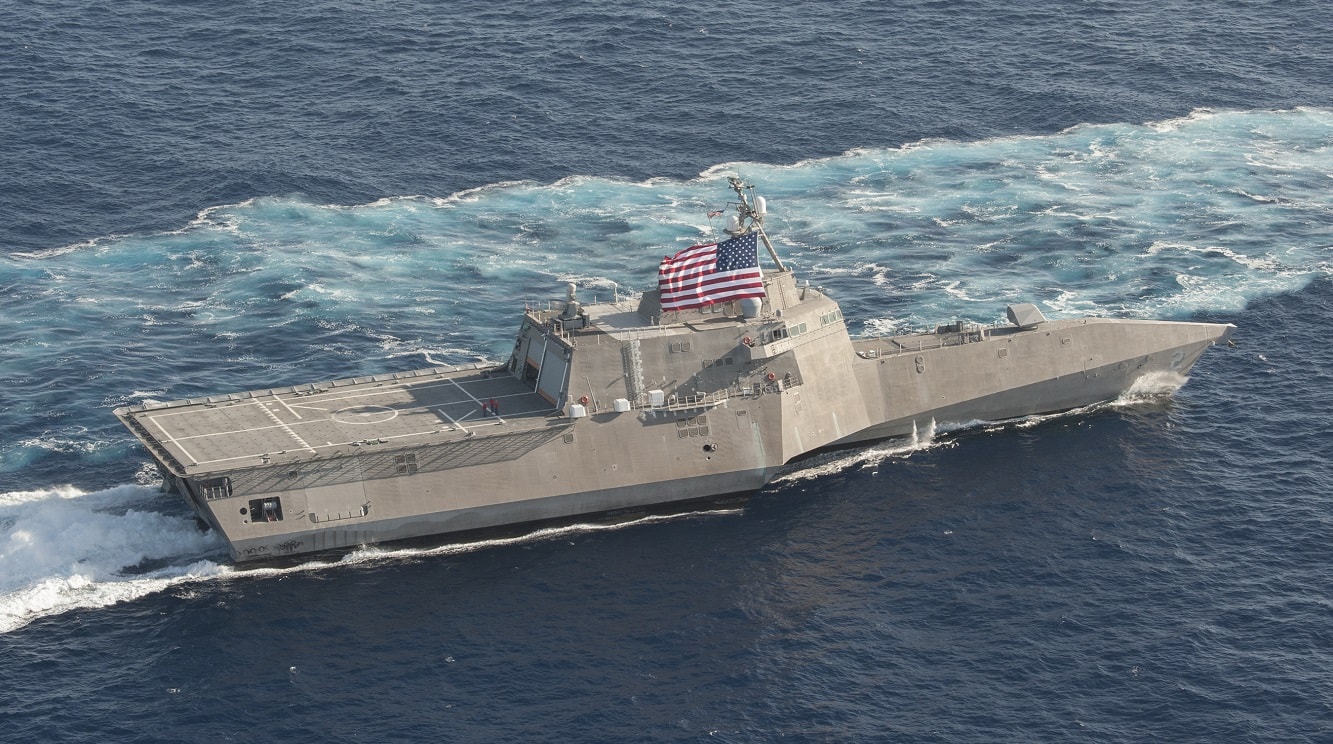Littoral Combat Ships: What Will the U.S. Navy Decide? Nine of the US Navy’s Freedom-class Littoral Combat Ships (LCS) have been earmarked for disposal as part of the Department of Defense’s Fiscal Year 2023 budget proposal, USNI News reports. The nine ships are mostly in their infancy. Five of the ships are less than five years old. Getting the nine ships built and outfitted cost US taxpayers $5 billion – making the DOD’s proposal to scrap nine brand-new LCSs, something of a scandal. The LCS, once billed as the future of US naval warfare, now appears to be a failed, costly experiment.
Littoral Combat Ships, Explained
The US Navy’s LCS program includes two separate classes of small surface vessels built for near-shore operations. The LCS was designed as a high-utility, cure-all capable of serving in a wide variety of missions profiles.
The futuristic ship, meant to be reconfigured smoothly and conveniently, was slated to serve in anti-surface warfare, anti-submarine warfare, interception, logistics, recon, minesweeping, and patrol roles.
Built for speed and flexibility, the LCS can carry helicopters, autonomous vehicles, and assault teams – all of which help the LCS perform its various functions.
However, the LCS was never meant to serve in a direct combat role. Instead, the ship was meant to relieve larger frigates and destroyers from performing more “secondary” duties, so that the Navy’s heaviest, most powerful vessels would be free to serve strictly in open combat roles.
LCS Nightmare
The LCS has come to be considered an “albatross” program. Costing billions of dollars, the LCS program’s return on investment has been quite limited. Two of the ships were decommissioned last year – the Freedom and the Independence. Each was meant to serve for a quarter-century. Freedom made it all of 13 years, and Independence, just 11. Neither ship performed adequately to justify the price tag. Freedom mostly patrolled Latin America. Independence never even made it to the frontline.
When the Navy was confronted with the option of upgrading the two LCSs, for $2.5 billion each, to meet updated fleet standards, the Navy instead chose to scrap the relatively new vessels.
LCS Problems
It wasn’t just the price tag, or lack of application, which inspired the Navy to decommission the first two LCSs. The ships had caused constant problems. The propulsion system, for example, was always in need of maintenance. The LCS, designed to operate at high speed, required a complex propulsion system that “breaks so often…the type struggles to complete deployment,” David Axe wrote for Forbes. Further, the LCS’s maintenance is so contractor-dependent that the Navy has a difficult time fixing the ship’s systems without outside help. And ultimately, while the LCS was designed to serve in various, alternating configurations, the process of readjusting configurations was so temperamental that the Navy decided to keep one configuration per vessel – meaning, the LCS isn’t so flexible after all.
Remarkably, the LCS was not outfitted sufficiently to survive a hostile combat environment. “To keep down the roughly $500-million per ship cost of the hulls, the Navy chose to arm them only with light weaponry – guns and short-range self-defense missiles,” Axe wrote. The Pentagon admitted as much, in a 2010 report, which found that “neither the Lockheed ship, a steel monohull design, nor a competing aluminum-hulled trimaran design built by General Dynamics Corps was expected to ‘be survivable in a hostile combat environment.” However, the LCS is “too big and expensive for scouting,” Axe reported. So, the ship that was designed to do everything, can’t do anything.
If those issues were not enough, this past month, the Navy Times reported that “half of the Navy’s littoral combat ship fleet is suffering from structural defects that led to hull cracks on several vessels, limiting the speed and sea states in which some ships can operate.” Apparently, the cracks can widen if the LCS travels faster than 15 knots, in seas with “maximum wave heights of about eight feet.” Limiting the cracked LCS ships, which were designed for travel in excess of 40 knots, to just 15 knots is another humiliation for the program.
House and Senate panels, hesitant to burn taxpayer’s money so flippantly, will closely examine the DOD’s proposal to mothball nine LCS vessels – but the trends seem clear: the LCS is unfit for service, and will be decommissioned well before their quarter-century shelf life, whether or not Congress puts on a show of resistance.
Harrison Kass is a Senior Defense Editor at 19FortyFive. An attorney, pilot, guitarist, and minor pro hockey player, he joined the US Air Force as a Pilot Trainee but was medically discharged. Harrison has degrees from Lake Forest College, the University of Oregon, and New York University. He lives in Oregon and regularly listens to Dokken.

